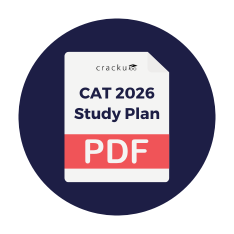SSC CGL 7 June 2019 Shift-3
For the following questions answer them individually
SSC CGL 7 June 2019 Shift-3 - Question 1
Select the option that is related to the fifth term in the same way as the second term is related to the first term and the fourth term is related to the third term.
6472 : 25 :: 7343 : 41 :: 6582 : ?
SSC CGL 7 June 2019 Shift-3 - Question 2
If
$$+$$ denotes $$-$$
$$-$$ denotes $$*$$
$$*$$ denotes $$/$$
$$/$$ denotes $$+$$
then what will be the numeric value of
$$60 * 10 / 40 + 6 - 5 = ?$$
SSC CGL 7 June 2019 Shift-3 - Question 3
Three of the following four letter-clusters are alike in a certain way and one is different. Pick the odd one out.
SSC CGL 7 June 2019 Shift-3 - Question 4
How many triangles are there in the following figure ?

SSC CGL 7 June 2019 Shift-3 - Question 5
Arrange the following words in a logical and meaningful order.
1. Doctor
2. Recovery
3. Hospital
4. Home
5. Sickness
6. Medicine store
SSC CGL 7 June 2019 Shift-3 - Question 6
Three of the following four words are alike in a certain way and one is different. Pick the odd word out.
SSC CGL 7 June 2019 Shift-3 - Question 7
Two different positions of the same dice are shown. Which number will be at the top if 3 is at the bottom ?

SSC CGL 7 June 2019 Shift-3 - Question 8
A cycle was sold for ₹4,140 with a profit of 15%. At what price could it have been sold to earn a profit of 25% ?
SSC CGL 7 June 2019 Shift-3 - Question 9
Which number will replace the question mark (?) in the following series?
7, 11, 18, 29, ?, 76
SSC CGL 7 June 2019 Shift-3 - Question 10
Two statements are given, followed by three conclusions numbered I, II and III. Assuming the statements to be true even if they seem to be at variance with commonly known facts, decide which of the conclusions logically follow(s) from the statements.
Statements:
Some quadrilaterals are squares.
All squares are rhombuses.
Conclusions:
I. No quadrilateral is a rhombus.
II. All rhombuses are squares.
III. Some quadrilaterals are rhombuses.

